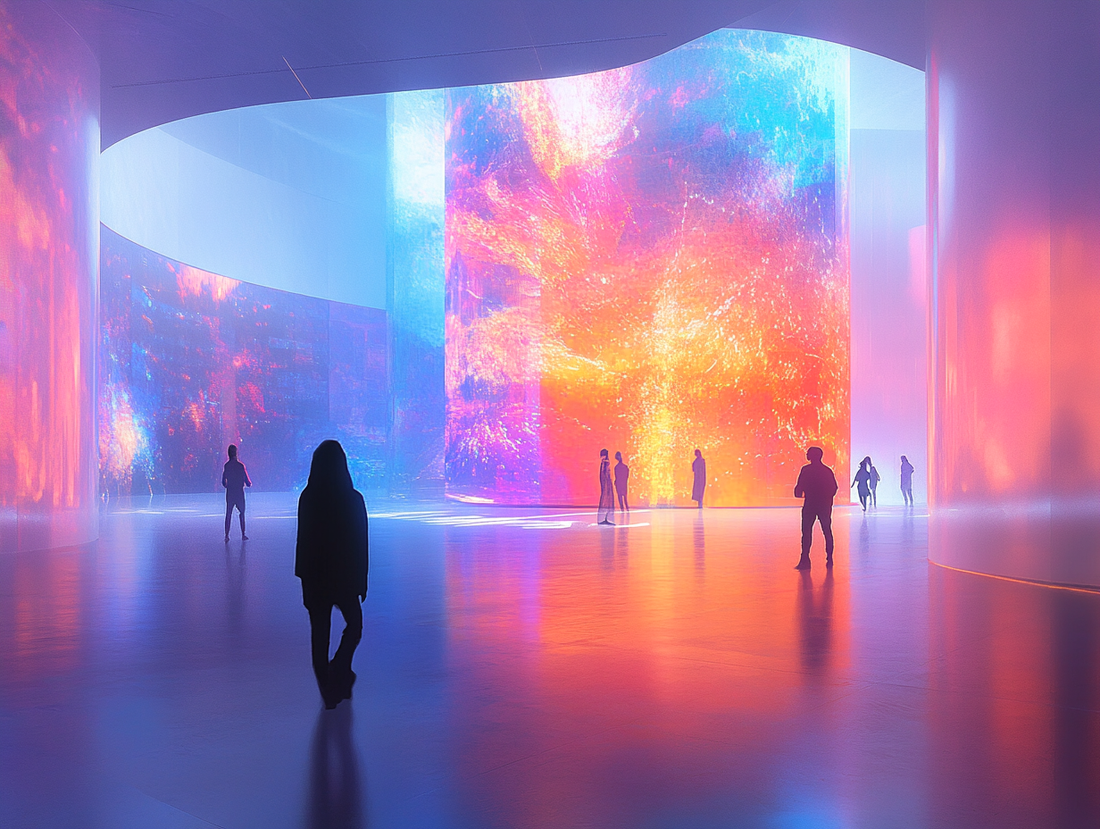
Quick Guide to Crafting Prompts for MidJourney (2024)
Share
MidJourney is a powerful AI tool that generates stunning visuals from written prompts. To get the best results, crafting a thoughtful, detailed prompt is essential. This guide will help you understand the nuances of prompt-writing, ensuring your creative vision comes to life.
1. Understand the Anatomy of a Prompt
A well-crafted MidJourney prompt typically consists of the following components:
- Subject: The main focus or central element of the image.
- Style: The artistic approach or visual aesthetic.
- Mood/Atmosphere: The emotional tone or ambiance.
- Details: Specific features, objects, or settings to enhance the image.
- Lighting and Color: The way the scene is lit and its color palette.
- Composition: The arrangement of elements in the image.
2. Crafting an Effective Prompt
Be Specific and Descriptive
Vague prompts can lead to unpredictable results. Use precise details to guide the AI.
- Instead of: A cityscape.
- Try: A futuristic city at sunset, with neon-lit skyscrapers, flying cars, and bustling streets, cinematic perspective.
Incorporate Adjectives
Adjectives help define the mood and style of your image.
- Example: A serene mountain lake surrounded by lush, autumn-colored trees, soft golden light filtering through misty air.
Specify the Art Style
MidJourney can emulate various styles, from realism to abstraction. Use terms like:
-
Photorealistic, watercolor, impressionist, minimalist, surrealist, fantasy art, cyberpunk.
-
Example: A dreamlike surrealist painting of a floating castle surrounded by colorful clouds.
Define Lighting and Perspective
Lighting and perspective dramatically influence the mood and depth of the image.
-
Lighting: Soft glow, dramatic shadows, neon reflections, golden hour, candlelit.
-
Perspective: Bird's-eye view, close-up, wide-angle shot, isometric perspective.
-
Example: A magical forest at twilight, illuminated by glowing fireflies, wide-angle shot.
Include Key Elements
Highlight specific details that are essential to your vision.
- Example: A steampunk airship flying over a Victorian-era city, with intricate mechanical details and smoky skies.
3. Avoid Common Pitfalls
Avoid Overloading the Prompt
Too many details can confuse the AI. Focus on the most important aspects.
- Instead of: A knight in armor standing on a cliff with a dragon in the background, a castle in the distance, birds in the sky, and a waterfall nearby.
- Try: A knight in shining armor standing on a cliff, gazing at a distant dragon near a glowing castle.
Avoid Negative Prompts
MidJourney struggles with "negatives" (e.g., "no clouds"). Instead, emphasize what you do want.
- Instead of: A beach scene with no people.
- Try: A tranquil, empty beach at sunrise.
4. Experimentation and Iteration
MidJourney is an iterative process. Start with a broad idea and refine it based on the results. Use additional prompts to adjust specific aspects.
- Initial Prompt: A futuristic city at night.
- Refined Prompt: A cyberpunk cityscape at night, with neon lights reflecting on wet streets, foggy atmosphere, and towering skyscrapers.
5. Examples by Theme
Fantasy
- A majestic dragon perched on a snowy mountain peak, with a medieval castle in the background, glowing in moonlight, highly detailed, fantasy art style.
Sci-Fi
- A futuristic space station orbiting a distant planet, glowing with blue and white lights, surrounded by small spacecraft, photorealistic.
Nature
- A serene waterfall in a tropical rainforest, surrounded by vibrant green foliage and colorful flowers, soft sunlight breaking through the canopy.
Surrealism
- A floating island in the sky, with a giant clock embedded in the terrain, dreamlike clouds swirling around, surrealist art style.
Architecture
- A minimalist glass house in a forest, surrounded by snow, with warm light emanating from within, modern architectural design.
Abstract
- A vivid abstract composition of swirling colors, inspired by galaxies and nebulae, dynamic and energetic, digital art.
6. Advanced Prompt Techniques
Blending Styles
Combine different artistic influences for unique results.
Example: A samurai in a cyberpunk city, blending traditional Japanese art with futuristic elements.Focus on Texture
Add texture-related keywords to enhance detail.
Example: A close-up of a worn leather-bound book, intricate embossing, soft light, photorealistic.Dynamic Composition
Use terms like action-packed, dramatic, chaotic, serene to describe the scene’s movement or stillness.
Example: An action-packed scene of a spaceship breaking through an asteroid field, cinematic perspective.7. Lighting Keywords
Lighting can transform the mood:
Soft: Gentle, diffused light for serene or dreamy effects.
Dramatic: High contrast, deep shadows for intensity.
Golden Hour: Warm tones for natural and magical aesthetics.
Neon Glow: Bright, colorful lights for futuristic or urban settings.
Example: A city street at night with neon signs and glowing puddles, cinematic lighting.
8. Advanced Use of MidJourney Parameters
MidJourney supports parameters to refine the output:
Aspect Ratios: Use --ar 16:9 for wide scenes or --ar 1:1 for square compositions.
Quality: Use --q 2 for higher quality images.
Stylization: Use --s 1000 to increase artistic freedom.
Example: A bustling cyberpunk market, neon lights, rainy atmosphere, wide-angle view --ar 16:9 --q 2 --s 750.
9. Practical Tips for Better Results
Use real-world references: Include comparisons like “a scene inspired by Blade Runner.”
Include emotional tones: Words like whimsical, eerie, uplifting can guide the mood.
Focus on consistency: Use similar phrasing for a series of related prompts.
Final Example
A futuristic art gallery showcasing AI-generated artwork, sleek modern architecture, vibrant holographic installations, warm ambient lighting, a global community of artists collaborating with technology, wide-angle cinematic view --ar 16:9 --q 2.
MidJourney is a creative journey, so experiment, iterate, and let your imagination soar!

